Last updated on August 10th, 2021 at 08:02 pm
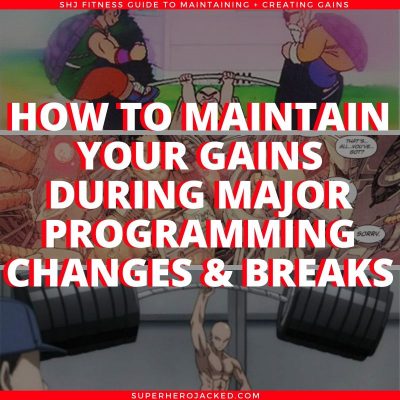
If you’re reading this, chances are you’re on some sort of self-quarantine and you don’t really want to head out.
Worse, your favorite gym’s closed its doors until this worldwide problem blows over.
The news says it might take months before things start to look normal, so you fear losing all the hard earned gains you worked so hard for.
Luckily for you, we’re going to give you a breakdown of who should be slightly worried (and what you can do to alleviate some of those worries if you meet this criteria) and who will likely be just fine in the gains department.
Let’s start with a broad overview.
First Off: Don’t Panic
Look, we get you. We really do. It’s scary to think that all the muscles you worked tirelessly to build might end up deflated by the time this pandemic is over. Not only would you have lost form, but also strength and to go back to square one is not something anyone can just mentally accept.
However, we urge you to not worry too much as the reality of the situation isn’t as bad as you think it is.
Now, if you sit in bed for 10 straight days, you will likely experience some muscle loss. This study shows that during one week of bed rest did lead to muscle atrophy, among other side effects, but assuming you’re not just binge watching Netflix in bed for nearly two weeks: you have a lot of options!
Assuming that’s not the case, and depending on your overall training style and goals, we’re going to be teaching you the best ways to optimize two things:
- Muscle and Toning (Continue Getting Shredded)
- Muscle Preservation (Preserve Strength Gains and Mass)
To do this, we’ll start with some examples you can definitely relate to if you’re part of The SHJ Army…
Examples of Different Situations
We recently did a poll inside The Academy asking what each individual’s goals are, and what they saw as a “Superhero Physique”. Roughly 70% answered in our first two examples, while only 30% fit the second two.
Let’s start by discussing the fact that everyone is different.
If your goal is to get absolutely shredded and do a handstand, then you probably won’t have any issues with your current progression during our current situation (we’ll soon explain why).
On the other hand, if your goal is to bulk up and increase your big three lifts to some whopping 2k+ lifting totals, then you probably really want to keep reading.
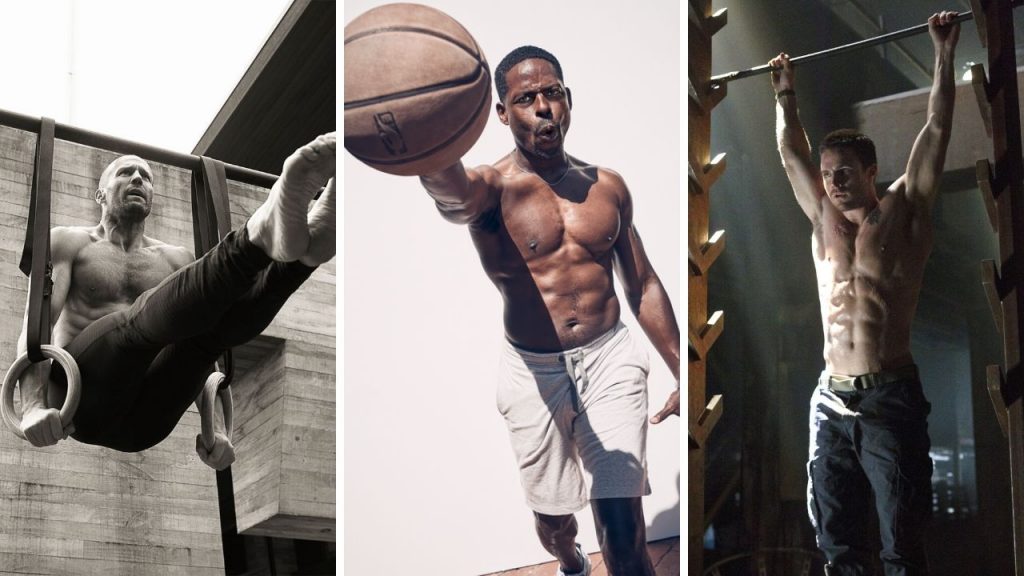
Example 1: Calisthenics Training Style
The picture above shows Jason Statham, Sterling K. Brown and Stephen Amell.
All of which have created their incredible physiques with the use of calisthenics training.
That being said…if your goal is to look like them and you’re currently stuck doing calisthenics training; something tells me you’ll be just fine!
Well, so long as you have a floor and maybe a chair to do some calisthenics.
Our Ultimate Calisthenics Workout & Guide is also a compilation of resources (scaling -> advancing and more), the ultimate calisthenics workout (made up of five different training levels and advancement stages) and workout routines from all over SHJ that will help you get the best training with your calisthenics.
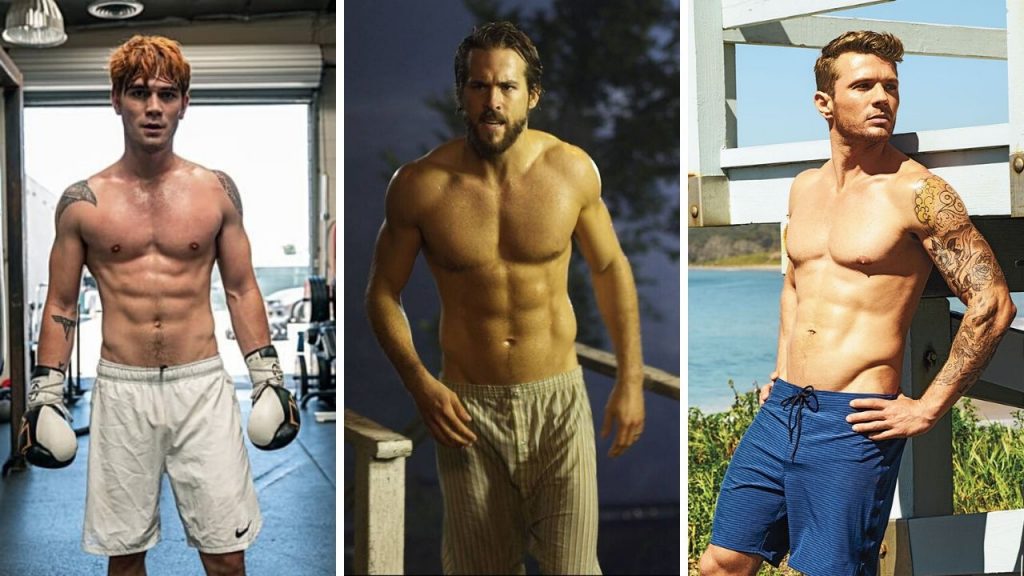
Example 2: Circuits, Weights, Calisthenics and Shredding Style
This picture shows off KJ Apa, Ryan Reynolds and Ryan Phillipe.
Some of you may be saying “well their physiques look a lot like the other guys you just shared with us.”
And, you’re right.
The reason they’re in a different example category is because their training methods vary and aren’t STRICTLY calisthenics.
All of these examples have utilized calisthenics, but have also utilized regular weightlifting, circuit training, supersets, and more.
And, I’m sure the initial three have also tried those things (actually I know for sure Stephen Amell has now), but they have stuck strictly to calisthenics movements for a large portion of accomplishing their physiques that I shared.
That being said, I am lumping this example (as you’ll see during the progression of this article) into what will be the same category as the first example.
These are both examples of physiques that are absolutely attainable from the comfort of your home and with calisthenics and bodyweight training.
If you really want to step it up a notch (which you might after reading the rest of this article), you can take a look at my recent article where I show you how to Build Your Superhero Home Gym for Under $100!
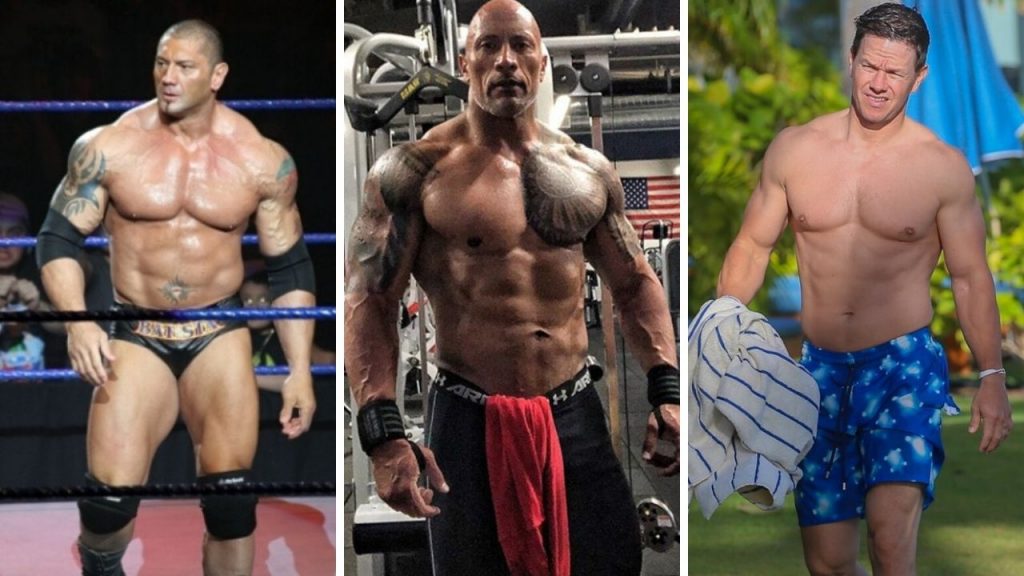
Example 3: Weightlifting and Getting Big
Okay. Now we’ve come to a much different category.
While the first two examples were able to be paired together, and I will pair the next two together at some points during the rest of this article, I do want to make it clear that they are VERY different; but have enough similarities to make my recommendations that they share relevant.
In the above pictures I’ve shared Dave Bautista, Dwayne Johnson and Mark Wahlberg, who have all trained BIG and got BIG throughout their careers.
In this case things might be a little different for you, but keep in mind: you’re going to treat the changes you make different depending on if this is a goal you’re just starting out on achieving vs a goal you’ve been working years at.
The latter suggests your main focus is going to be muscle preservation.
The former indicates you have some muscle building to do.
If muscle preservation is your goal, you can use the tips I give below to work on maintaining and preserving as much muscle as possible.
If you’re just getting started on building that initial muscle, well then go ahead and pick up the tips from the other two examples and begin chipping away at that foundation.
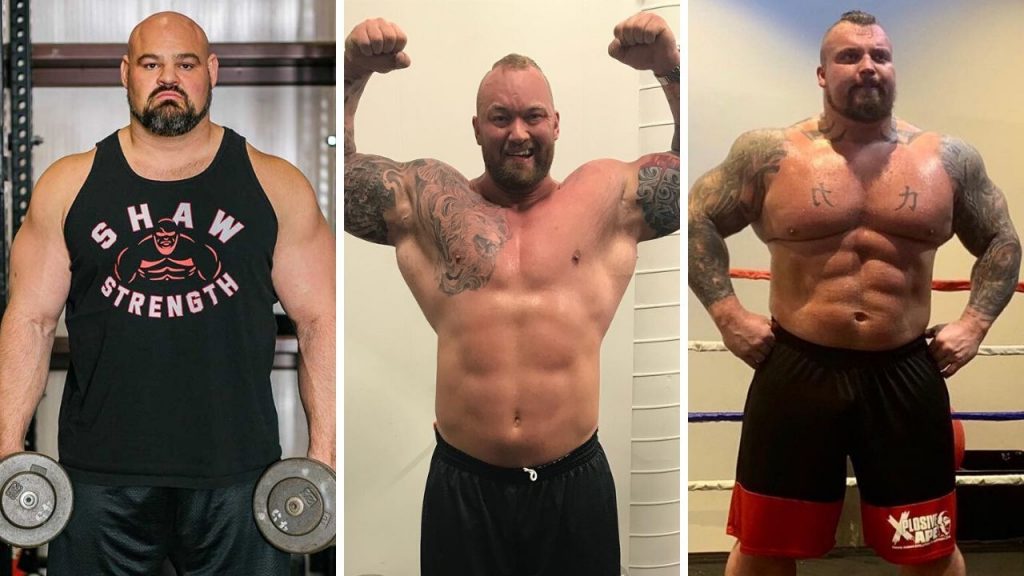
Example 4: Powerlifting for Big Numbers
Chances are you can already tell how this example is very similar to example 3.
We’re talking about building muscle, gaining mass, and whether or not your main goal is to get started or potentially preserve or maintain any muscle you’ve already built.
In that regard, the two examples are nearly the same.
That being said, outside of this article, they definitely take on two different training styles and goals.
For the sake of this article, though, we CAN copy and paste a small section of Example 3 below:
Keep in mind: you’re going to treat the changes you make different depending on if this is a goal you’re just starting out on achieving vs a goal you’ve been working years at.
The latter suggests your main focus is going to be muscle preservation.
The former indicates you have some muscle building to do.
If muscle preservation is your goal, you can use the tips I give below to work on maintaining and preserving as much muscle as possible.
If you’re just getting started on building that initial muscle, well then go ahead and pick up the tips from the other two examples and begin chipping away at that foundation.
Oh, and for those of you wondering, that’s Brian Shaw, The Mountain, and Eddie Hall; some of the greatest powerlifters ever in that picture above.
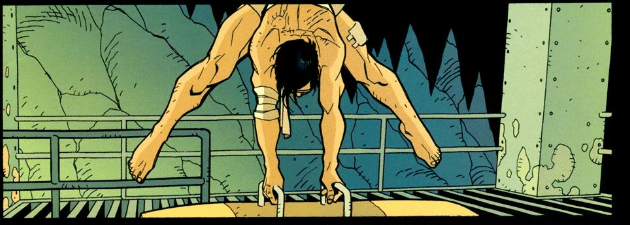
Recommendation #1: Progressive Tension Overload
I like to refer to this as the golden rule of muscle hypertrophy.
Formally, it is referred to as progressive tension overload (PTO), a term which was coined by U.S Army physician Thomas Delorme during the 40’s.
It’s a simple yet extremely overlooked concept which claims that in order for muscle to grow, it must adapt to a tension (or load/intensity) that it has not previously experienced. Since then, many scientific studies have proven the importance of tension.
Many of you may be saying “Hey, I see Mike talk about progressive overload all the time!” being that we have our “Upgrade Your Workout Tool” inside The Academy that allows members to scale up their workouts with progressive overload, pyramid training, reverse pyramid training, straight sets, super sets, circuits, giant sets, and all the technical stuff that not every routine is capable of coming along with.
One such study was published back in 2004 by the Journal of Strength and Conditioning Research.[1] It concluded that tension is indeed the single most important variable that contributes to cellular adaptation to resistance exercise.
PTO is a concept that any athlete should practice. It correlates the goal of building muscle with the metric of strength. So long as you are getting stronger each week, you will invariably build muscle. But getting stronger doesn’t necessarily mean bench pressing more weight. Simply pushing a few extra reps counts. If you did 10 pull-ups this week, and tried your best to hit 11 the next, you are following PTO, even if you couldn’t hit 11 reps. The important thing is that you made an attempt to subject your body to more tension.
That being said: If you continue to work on your progressive overload in any given style of training that you utilize, you can continue to gain muscle and make gains.
But, therein also lies the primary issue with taking a break from weight training, powerlifting, bodybuilding, or any other mode of training you follow- you can’t implement one of the most important factors that results in the growth of muscle. You can, however, continue to implement the other two factors, but let’s tackle this issue first.
The above study also discovered that maximal hypertrophy occurs when lifting with a load of 80-95% of a person’s 1RM (one rep max).
Without subjecting your muscle to periodically heavier loads, you simply cannot make gains at the same optimal rate you’re likely used to.
Which is okay.
During these difficult times, if you’re a heavy weightlifter or powerlifter, we should be focusing on preserving as much muscle as we can. We can worry about optimizing growth after the dust has settled.
Which, in conjunction with our rule on progressive overload (which you may now need to implement via calisthenics), we’ll talk about a couple other recommendations you can utilize to help with your gain preservation.
And, for any of you looking for the best calisthenics program, you should check out our Ultimate Calisthenics Workout & Guide that compiles tons and tons of workouts and resources from SHJ into one incredible article.
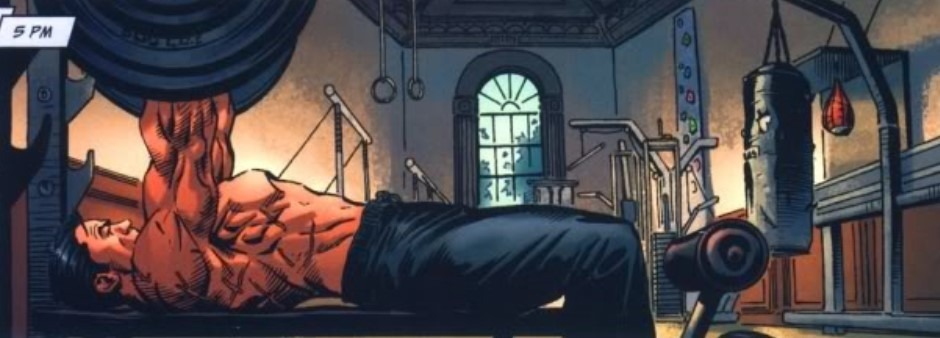
Recommendation #2: Keep Training Any Way You Can
Now let us blow your minds a bit.
Let’s talk about a study that’ll help you out quite a bit.
We’ll call this section: high load vs. no load training.
A “high load” mode of training is very difficult to follow without access to a commercial or well stocked home gym. But that doesn’t mean you should stop training altogether. And even if you did, it wouldn’t be the end of the world. But what if I told you that there was a viable way to continue, or at the very least maintain, your progress?
A 2016 study conducted by the University of Mississippi compared the muscular adaptations of “no load” and traditional “high load” training.[2] 13 individuals participated in the 6 week long study that involved unilateral elbow flexion exercises (think of a bicep curl), 3 times a week. The experiment followed a within-subject design, which basically means that all participants were exposed to both conditions of the study- one arm was subjected to “no load” conditions and the other to “high load” conditions.
After six weeks, muscle thickness increased on both arms with no differences between conditions at 50%, 60%, and 70% of the distance from the acromion process to the lateral epicondyle. As the author of the study puts it, “muscle growth can occur independent of the external load provided that sufficient local tension is applied to the muscle.”
You might be wondering why the “high load” arm didn’t grow significantly faster then the “no load” arm. The reason for this is that the subjects were untrained, and would therefore respond well to any form of exercise.
Regardless, with the right amount of progressive overload and scaling within your training, you can make significant gains!
Nevertheless, the fact that both arms responded equally is significant enough to lead us to the conclusion that “no load” training, while not nearly as effective as “high load” training (for experienced athletes), is at the very least effective for preserving muscle.
Which furthers the point I made above about beginners being able to stay on course even if the goal is to become Example 3 or 4, while those who have already started and built a foundation of mass may want to focus strictly on preservation.
Let’s have a closer look at what exactly the “no load” condition is. The author defines it as “contracting the muscle through a full range of motion without using an external load or resistance at a fixed cadence”.
Just to put that into perspective of the levels we’re working with in this study compared to what we could be working with in our normal training, here’s how it would go:
- No Load Training
- Calisthenics and Bodyweight Training
- Weightlifting with Normal Load
- Weightlifting with High Load
- Powerlifting in 1-5RM Ranges Often
So calisthenics and bodyweight training are actually training at a level ABOVE what this study has defined as “no load”, and the conclusion, as stated above, showed that both arms increased in the same amount of muscle, or as some of you may prefer them to be called: gains!
In the spirit of recommendations, the thing to take from this section would be to continue training, even if you do not have access to weights right now!
Use progressive overload, maintain and make as many gains as possible, and keep chugging on!
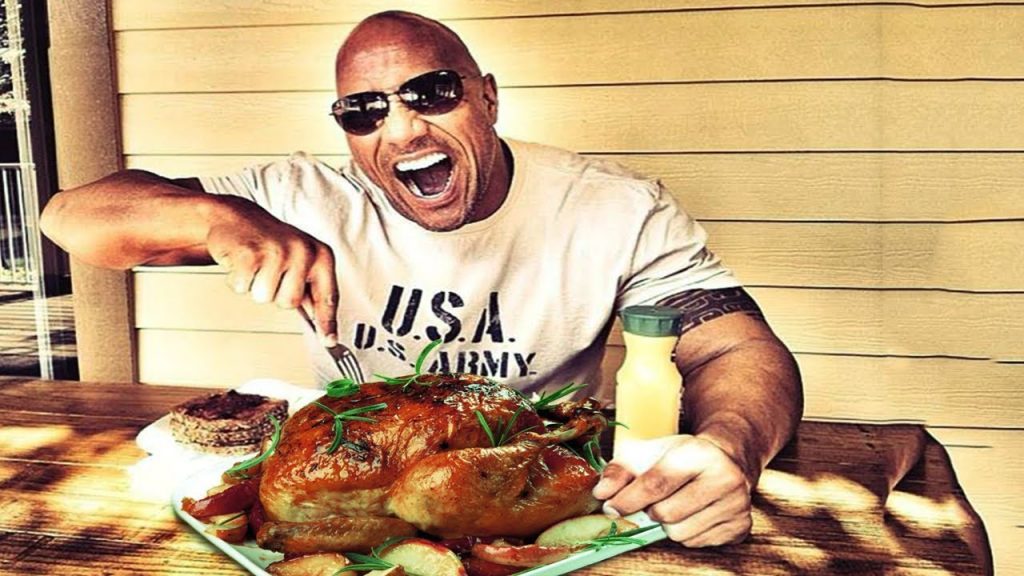
Recommendation #3: Your Nutrition Plan
Building and maintaining muscle is made up of your training (and therefore utilizing tools like progressive overload), your nutrition (which we’ll cover now), and of course additives like proper recovery and supplementation.
These are all things we already know from the more than 700 articles at SHJ, but of course you can review more information within our Resources page, and especially by reviewing our Nutrition Pillars, which will help us out a bit more during this section.
That being said, let’s answer the main question that pertains to this article:
Do we have to change our nutrition during a break period or programming change in order to gain and/or maintain muscle?
Let’s break it down a bit by the initial examples we talked about at the start of this article…
For those doing calisthenics, circuits, or cutting- stay the course!
Keep your protein levels high, and follow the dietary guidelines you’ve been utilizing.
If you want to lose weight you obviously still need to be in a caloric deficit, and if you want to tack on some muscle and increase your strength, you’ll want to be in a bit of a surplus.
But if you want to pack on a little bit more muscle, increase your total caloric intake.
If you want exact guidelines on all of this you can obviously get them within The Academy or any of our Superhero Programs.
Now where things will change a bit are when we’re talking about the other two examples.
To be more specific: I am going to recommend making some changes if you fall into the category of heavy weightlifter or powerlifter.
It’s nothing too severe, but it is worth the recommendation nonetheless.
Bodybuilder and YouTube fitness expert Jeff Nippard recommends eating at a caloric maintenance or in a slight (5-20%) caloric surplus if your main priority is preserving muscle mass.
He goes on to say: “if your main goal is to lose fat, try to increase protein intake to be somewhere in the ballpark of 1g per lb. of bodyweight” – which is a fairly normal recommendation in some cases anyway.
But, remember, if you’re in one of the first two examples and mainly looking to tone, shred and tack on some superhuman-like muscle, not all that much is changing for you other than the style in which you’re going to be training in order to get your shred on.
With that 1g of protein per lb. of bodyweight recommendation, though, it could be fairly hard to find the right foods while being confined to your home right now.
In this case, protein powder and other types of supplements could be a great tool for you to use.

Recommendation #4: Supplementation
At SHJ we don’t recommend that many supplements and we prefer to use The KISS Method.
In other words, we keep it simple and stick to what we need.
In this case, I definitely recommend supplementing protein.
I actually normally supplement 25-50g of protein per day (which obviously varies sometimes if I opt for more protein within my meals), from protein powder; which I 99.99999% of the time simply mix with water.
I even recently wrote an article on The Top 5 Protein Powder Supplements available on the market today.
I obviously understand if you can’t get out to the stores to purchase this (at the time of writing this article many stores who would have this are closed or do not have them); but I have recently been able to grab them on Amazon without any issue.
And, while we’re on the topic of supplements, I can give you a recommendation on my Top 5 Pre-Workout Supplements as well since some of you may need an extra kick in the butt when swapping over to calisthenics.
But that’s a quick wrap up for my recommendation on supplements that pertain to this article.

Conclusion: Maintaining and Creating Gains
That was a lot to take in.
Which brings us to a nice conclusion on what you can take away from the article in its totality…
- If your goal is to tone up and get shredded, you can likely stay the course and utilize the amazing calisthenics workouts in our Workout Database or shared in our Ultimate Calisthenics Workout and Guide in conjunction with the Nutrition Pillars we already share.
- If your goal is to become a Bodybuilder or Powerlifter whose main concern is preserving muscle, I would recommend to continue training using the same resources I’ve shared (while using progressive overload), while changing your nutrition planning to put yourself in either a caloric maintenance or slight bulk of 5-20% surplus in order to continue maintaining your gains.
Obviously, if you’ve skipped the rest of this article and just came down to this section a lot of that will seem like broad recommendations leading you out into our resources, so I encourage you to go back and checkout some of the studies and sources I have utilize throughout the article!
Stay safe and keep making (and maintaining) gains!
Chat soon,
Mike Romaine
SHJ’s Nick Fury
(This article was co-written by the team at OlympicMuscle.com)
Check out all The SHJ Programs and start unleashing your inner SuperHuman.

SUPERHUMAN SECRETS V.2
NOW UPDATED AND EXPANDED WITH A NEW SECTION & SEVEN BONUSES
USD$29 USD$14.95

